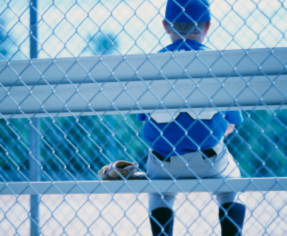Social/Emotional Skills
A child’s social/emotional skills are developing quickly at this age. They now have friends and are able to understand their emotions as well as the feelings of others. They can also play well with others without supervision and without getting into trouble (Fig.1). But this is also the time some children develop a wide range of anxiety-based disorders. Being aware of these signs and recognizing them is very important. The earlier we recognize these signs, the earlier the child can get help.
Figure 1. Girls playing
Social Skills
A child with social development delays may:
- have very few or no friends;
- prefer to be alone;
- not get invited to outings and birthday parties;
- be left out of group play activities at school (Fig. 2);
- not be able to understand someone else’s point of view;
- not understand others’ right to privacy (this is very dependent on the child’s culture);
- constantly interrupt others;
- have trouble waiting for his or her turn when wanting to play with a certain game;
- be overly defiant of others;
- avoid social situations;
- hurt others’ feelings on purpose (for example, making fun of someone because they wear glasses, even after being told that doing so would hurt that person’s feelings);
- not say “sorry” and apologize when making a mistake or if hurting others’ feelings;
- get into too many fights;
- hit, bite or kick others;
- refuse to share with others;
- be unable to follow the normal flow of a conversation;
- appear to have no sense of humor;
- be inflexible and wanting things done his or her way only.
Figure 2. Left out
Emotional Skills
A child with delays in emotional development may:
- overreact to small problems (for example, getting very upset if they lose a sock);
- have very poor impulse control (for example, getting upset too quickly and maybe hitting someone or breaking something);
- be unable to label their feelings (for example, being unable to tell the difference between being sad or angry);
- be unable to identify the feelings of others (for example, being unable to tell if someone is sad or angry);
- need a lot of encouragement to start a task;
- have poor self-esteem;
- move from one extreme emotional state to the next (that is, being really happy then suddenly becoming extremely upset);
- have trouble sleeping most nights, even when going to bed early;
- appear overly anxious (Fig. 3);
- excessively worry about anything and everything;
- have a hard time when there is a change in routine (for example, not being able to go to a swimming lesson because it is snowing);
- not like to try new things or new foods;
- get easily overwhelmed by certain situations;
- be excessively afraid of certain situations and objects;
- not feel guilty after being told that she did something wrong;
- panic for no apparent reason (that is, child appears really anxious in a situation seen by others as normal);
- be overly self-conscious (for example, constantly worrying about what they look like);
- be excessively shy;
- have a narrow range of interests (for example, being only interested in toy cars);
- struggle with the understanding of cause and effect situations (for example, not understanding that the reason an object is broken is because it was thrown on the floor).



0 comments
Kick things off by filling out the form below.
Leave a Comment